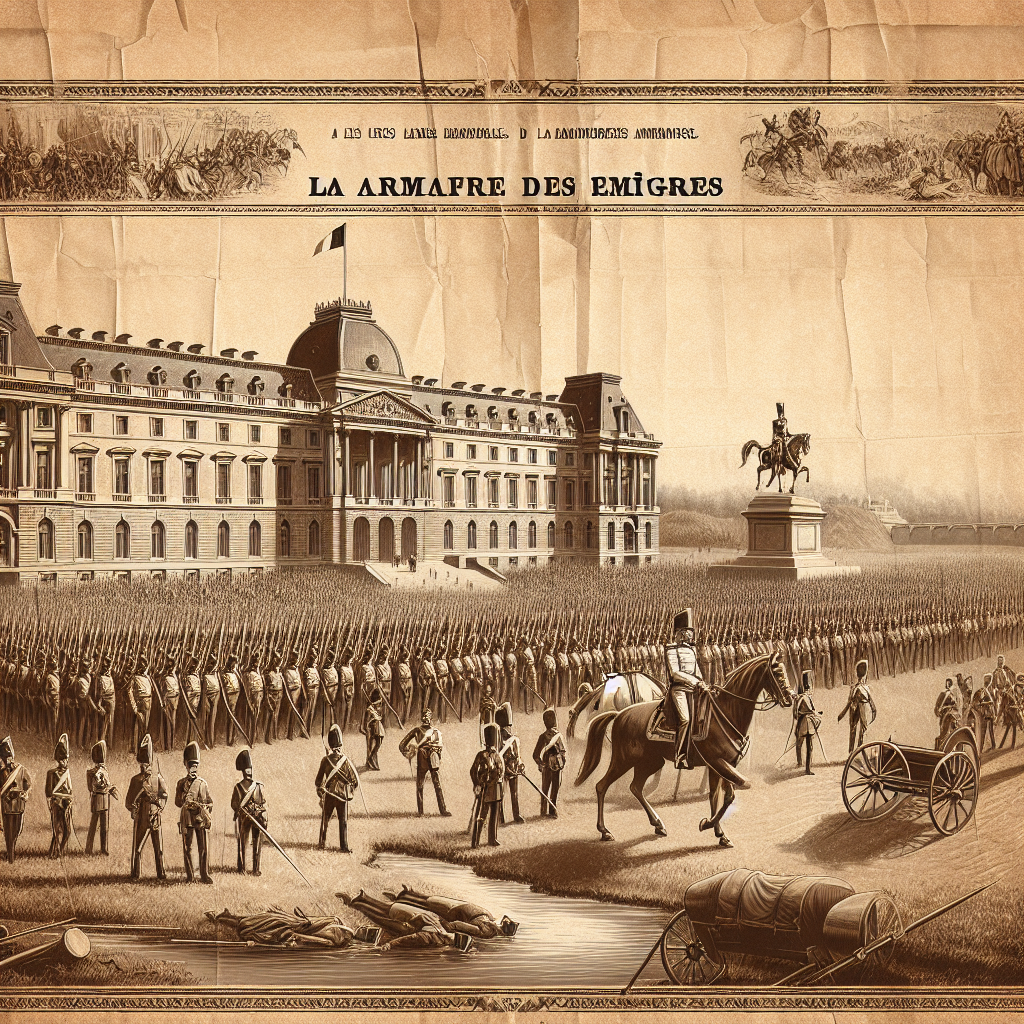While many of us fantasize about adventure by imagining swashbuckling pirates or enigmatic spies, it might surprise you that real-life historical intrigue can be found in the Armée des Émigrés, a military force that manifested the dramatic intersection of politics, loyalty, and desperation during a tumultuous period in France. Predominantly composed of French royals and nobles, the Armée des Émigrés formed between 1791 and 1815 during the upheaval of the French Revolution. Exiled by the waves of radical change cresting in their homeland, these émigrés endeavored to restore monarchy and save what they considered France’s grand tradition.
Where It All Began
Our story starts in Europe in the late 18th century, a time tumultuous enough to make Game of Thrones seem like a tea party. The French Revolution (1789-1799) upended centuries of monarchic rule in France, sending shockwaves throughout Europe and giving rise to the Armée des Émigrés. As revolutionary fervor gripped France and radicals dismantled the monarchy, thousands of nobles, clerics, and royalists fled to neighboring countries, fearful for their lives. It was here, in German territories like the Holy Roman Empire, as well as in Britain, that they regrouped and organized for the counter-revolutionary cause. These émigrés believed their beloved monarchy and societal structure could be restored with the backing of foreign powers. It was an elegant yet bold maneuver, reminiscent of chess players who refused to let the king be toppled from the board.
The Peculiar Composition
The fighters were an eclectic mix of aristocrats, loyalists, and clergy. Imagine a military parade featuring elegant powdered wigs, drawn swords, and expectant smiles of returning to a familiar grandeur—a romantic vision if there ever was one! But military fashion aside, this force faced immense challenges. They were largely dependent on the goodwill and military supplies of foreign allies like Great Britain, the Austrian Empire, and the Kingdom of Prussia. With forces organized into different legions and under various commanders, the Armée des Émigrés was more symbolic than an effective military machine.
Most notable was the loss of their homeland not as a plot of land, but as a concept—the very essence of what France embodied to them. To these determined émigrés, France was La Patrie, something worth fighting to reclaim, regardless of the odds.
Against the Revolutionary Tide
Their military exploits, while bold, were usually plagued by misfortune or incompetence. One of the most notorious debacles was the Quiberon Expedition of 1795. Supported by British forces, the plan was an ambitious assault meant to spark a royalist uprising within France. Unfortunately, poor coordination and betrayal led to disastrous loss for the émigrés. Though such setbacks were common, they highlight brave resolve against overwhelming circumstances. Despite defeats, the Armée des Émigrés was persistent in their activism against the revolutionary government, showcasing a resilient aspect of human nature—the unyielding desire to return to one's roots.
The Constant Battle for Relevance
As the years wore on, the Armée had to wrestle with maintaining enthusiasm and morale. The French émigrés faced the challenge of keeping their struggle pertinent to a rapidly changing landscape. Revolution didn't pause, and as Europe watched, the Napoleonic era began to reshape the continent once again. By 1799, with the rise of Napoleon Bonaparte, many were forced to reconcile with reality as Napoleon’s Consulate reached out with measured and strategic clemency, blurring the harsh ideological lines that initially painted the revolutionary and counter-revolutionary spectrum.
Napoleon wasn't just any leader; he was an embodiment of the revolutionary spirit wearing the grandeur of an emperor, a fascinating paradox that made the prospect of compromise more enticing for many royals desperate for some semblance of normalcy. Thus, some factions within the Armée des Émigrés began to abandon their dreams of retaking France by force and instead negotiated returns on more reconciliatory terms.
What Can We Learn?
As we examine the Armée des Émigrés, we gain insights into human resilience and the complexities of ideological conflict. It served as a response to radical change, embodying both unwavering loyalty to tradition and the more timeless struggle between revolution and counter-revolution, which has echoed through various epochs in history. People will always struggle with change, and sometimes, they will pick up arms, whether metaphorically or literally, for what they hold dear.
The narrative of the Armée des Émigrés, while often overshadowed by larger revolutionary events, reminds us that history is made up not just of grand events, but also of countless individuals battling for their beliefs. As students of history and humanity, this glimpse into their trials can teach us compassion for those caught in transitions they never sought, yet felt compelled to influence.
Modern-day Relevance
Today, the legacy of the Armée des Émigrés exists as a poignant chapter in French history that speaks to the heart of human conflict and loyalty. Facing an uncertain future, this group of diverse individuals dedicated themselves to a cause greater than themselves. Though ultimately they did not succeed in their primary ambition, their story remains a testament to the enduring spirit of humanity in the face of the unknown. It’s a vivid illustration of how the past shapes our perspectives and compels us to learn better ways of coexisting in a world that is ever-changing.

